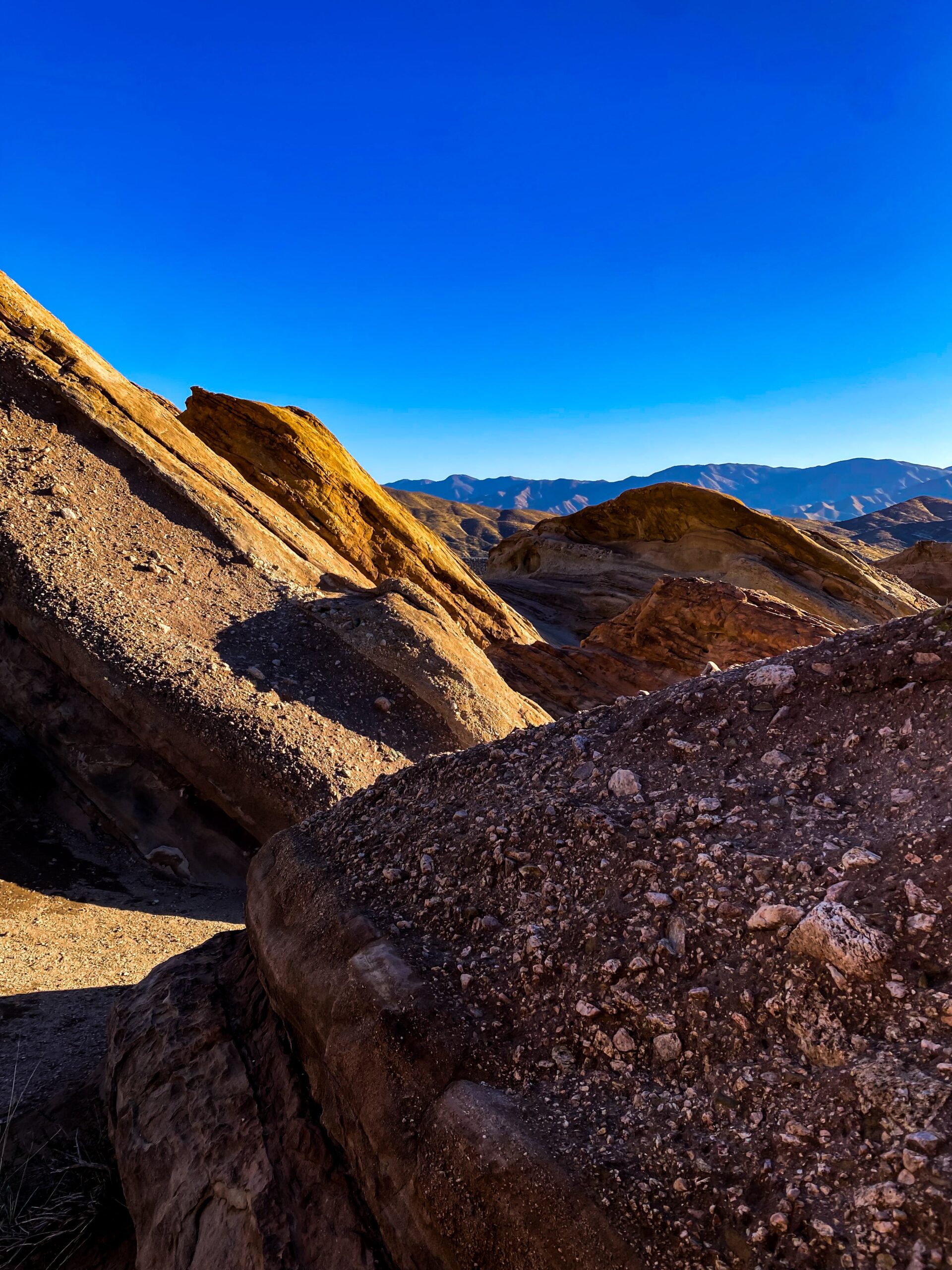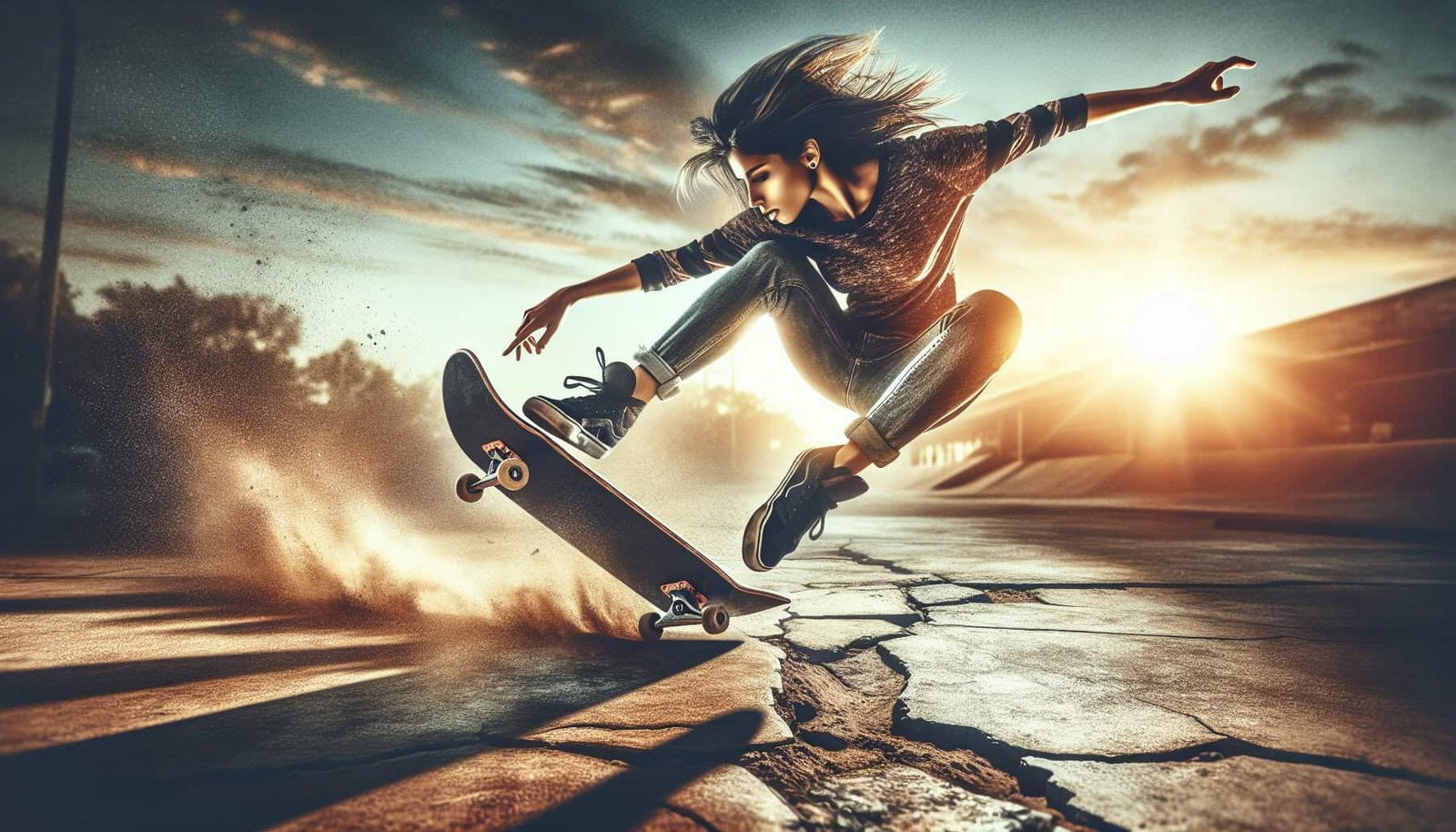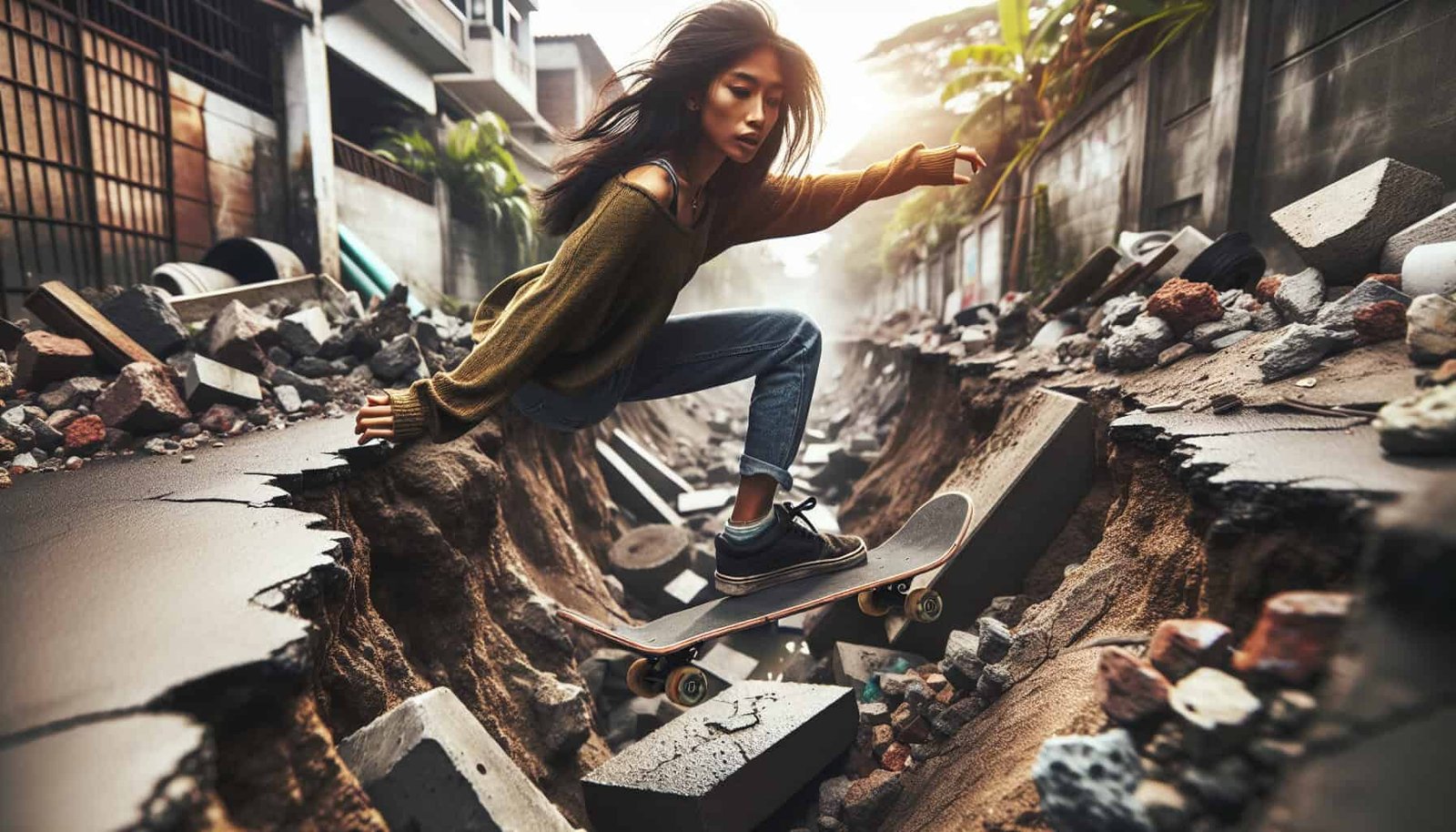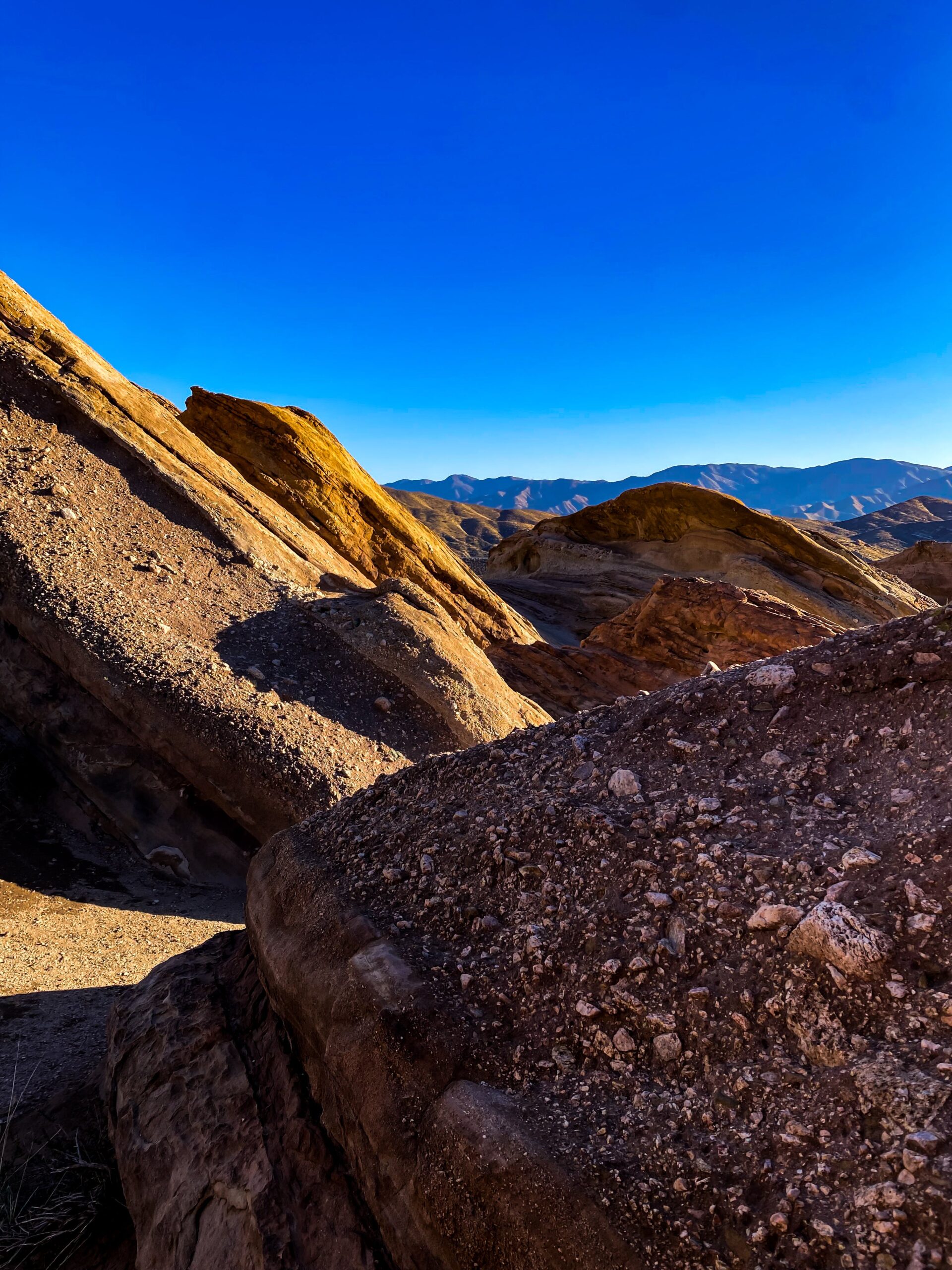Skateboarding, undoubtedly a thrilling and exhilarating sport, can often present its fair share of challenges, especially when you find yourself gliding over rough or uneven surfaces. How do you navigate these obstacles and maintain your balance without losing your cool? In this article, we will explore some tips and tricks to help you conquer the challenges of skateboarding on less than perfect terrain, ensuring that you can continue to enjoy the joyride while staying on top of your game.
Choosing the right skateboard
When it comes to skateboarding, choosing the right skateboard is essential for a smooth and enjoyable ride. There are several factors to consider, including the width and wheelbase, wheel hardness, deck material, and truck tightness.

Width and wheelbase
The width and wheelbase of a skateboard play a vital role in determining its stability and maneuverability. Wider decks offer more stability, making them ideal for beginners or those who prefer a solid ride. On the other hand, narrower decks are more maneuverable, which is beneficial for performing tricks and navigating tight spaces. Similarly, the wheelbase refers to the distance between the front and back wheels. A longer wheelbase provides better stability, while a shorter wheelbase allows for quicker turns.
Wheel hardness
The hardness of skateboard wheels affects how they grip the surface and absorb shock. Softer wheels provide more grip, making them suitable for cruising and riding on rough or uneven surfaces. Harder wheels, on the other hand, are better for smooth surfaces and ramps as they offer faster speeds and more slideability for tricks. It’s important to find the right balance between hardness and terrain to ensure a comfortable and safe ride.
Deck material
The material of the skateboard deck plays a significant role in its performance and durability. Most skateboards are made of wood, but there are different types to choose from. Maple wood is the most common and offers a good combination of durability and flexibility. Bamboo decks provide more flexibility and a springier feel, while carbon fiber decks offer enhanced strength and lighter weight. Consider your desired level of flexibility and strength when selecting a deck material.
Truck tightness
Skateboard trucks are the metal T-shaped components that hold the wheels to the deck. Adjusting the tightness of your trucks can greatly affect your ride. Tighter trucks provide stability but can limit maneuverability, while looser trucks offer better turning ability but may feel less stable. Adjust the tightness of your trucks based on your personal preference and the type of terrain you’ll be riding on.
Ensuring proper balance and posture
Maintaining proper balance and posture while skateboarding is crucial for both safety and performance. Here are some tips to ensure you stay balanced and centered on your board.
Bend your knees
When riding your skateboard, it’s important to keep your knees slightly bent. This allows for better shock absorption and stability, especially when encountering bumps or cracks in the road. By keeping your knees flexed, you’ll be able to react quickly and maintain control of your skateboard.
Maintain the center of gravity
A key aspect of balance while skateboarding is maintaining your center of gravity. Your center of gravity is the point within your body where all the mass is evenly distributed. To stay balanced, try to keep your weight centered over your skateboard. Avoid leaning too far forward or backward, as this can easily throw off your balance and lead to falls.
Proper foot placement
Proper foot placement is crucial for maintaining control and balance on your skateboard. Stance width and foot positioning will vary depending on whether you ride regular or goofy (left foot forward or right foot forward). Experiment with different foot positions to find what feels comfortable and allows for optimal control. Remember to keep your weight evenly distributed between both feet and avoid putting too much pressure on your toes or heels.
Adjusting your technique
Adapting your skateboarding technique to different situations can help improve your stability, control, and overall riding experience. Here are some adjustments you can make to enhance your skateboarding skills.
Increase stability with a wider stance
Widening your stance can increase your stability and balance while riding. By positioning your feet further apart on the skateboard, you create a wider base of support, making it easier to maintain your balance. Experiment with different stance widths until you find the one that feels most comfortable and stable for you.

Adapt your pushing technique
When skateboarding on rough or uneven surfaces, it’s important to adapt your pushing technique to maintain control. Instead of using long, powerful pushes, try shorter and quicker pushes. This allows for better control and stability, especially when encountering bumps or cracks. Additionally, focus on keeping your weight centered over your pushing foot to prevent any imbalance.
Maintain control with slower speeds
When skateboarding on rough or uneven surfaces, it’s crucial to maintain control by riding at slower speeds. Slower speeds provide better stability and reaction time when navigating obstacles or changes in terrain. Gradually build up your speed as you become more comfortable and confident in your ability to handle the challenges of the surface you’re riding on.
Navigating rough surfaces
Skateboarding on rough or uneven surfaces can present unique challenges, but with the right approach, you can navigate them safely and smoothly. Here are some tips to help you conquer rough surfaces.
Scanning the surface ahead
One of the most important things you can do when skateboarding on rough surfaces is to scan the road ahead. Look out for cracks, bumps, or other obstacles that could potentially disrupt your balance or cause you to lose control. By being aware of the surface conditions, you can adjust your speed and technique accordingly, ensuring a smoother ride.
Using your body as suspension
When encountering rough surfaces, it’s essential to use your body as a form of suspension. Bend your knees and absorb the impact by flexing your legs to minimize the impact on your skateboard. By “rolling” with the uneven surface, you’ll be able to navigate it more smoothly and reduce the risk of falling or getting thrown off balance.

Avoiding cracks and holes
While not always possible, avoiding cracks and holes is generally a good strategy when skateboarding on rough surfaces. Pay attention to the road ahead and try to anticipate where the cracks or holes are. When approaching them, either try to avoid them altogether or prepare to either pop a wheelie (lifting the front wheels) or ollie (jumping off the skateboard momentarily) to minimize the impact.
Mastering trick execution
Skateboarding is not just about cruising and riding; it’s also about performing tricks and pushing your limits. Here are some tips for executing tricks effectively, even on rough surfaces.
Landing impact absorption
When performing tricks on rough surfaces, it’s important to focus on landing with proper impact absorption. Bend your knees and prepare to absorb the impact upon landing to reduce the strain on your legs and joints. By cushioning the landing, you’ll minimize the risk of injury and ensure a smoother transition back into riding.
Modifying tricks for rough surfaces
Some tricks may be more challenging or even unsafe to perform on rough surfaces. In such cases, it’s important to modify the trick to suit the conditions. For example, instead of attempting a high kickflip off a curb, consider performing a low kickflip or a trick that doesn’t require as much vertical clearance. Adjusting your trick execution to the surface you’re riding on will help you maintain control and avoid unnecessary falls.
Using obstacles to your advantage
Rough surfaces often feature unique obstacles such as bumps, cracks, or even small mounds. Rather than viewing these as hindrances, try to use them to your advantage when executing tricks. For instance, you could incorporate a bump or crack into your trick, using it as a launch pad or to add an extra element of style. With practice, you’ll learn to navigate these obstacles creatively and enhance your trick repertoire.
Protecting yourself from injuries
Skateboarding can be a thrilling and enjoyable sport, but it’s important to prioritize safety and protect yourself from injuries. Here are some measures you can take to minimize the risk of injury while skateboarding.

Wearing proper protective gear
Before hopping on your skateboard, make sure to wear the necessary protective gear. This includes a helmet to protect your head, elbow and knee pads to cushion impacts, and wrist guards to support your wrists in case of a fall. Wearing the right protective gear significantly reduces the risk of serious injuries and allows you to focus on enjoying your ride.
Learning to fall safely
Despite your best efforts, falls are sometimes inevitable when skateboarding. Developing the skill to fall safely can greatly minimize the risk of injury. Learn how to roll out of a fall instead of bracing for impact, as this disperses the force across a larger surface area and reduces the chances of sustaining serious injuries. Practice falling on grass or other forgiving surfaces to build this skill.
Training your body to withstand impact
Skateboarding requires physical endurance and strength. By following a regular exercise routine that includes strength training exercises, conditioning drills, and stretches, you can prepare your body for the physical demands of skateboarding. Building muscle strength and flexibility will not only enhance your performance but also make you more resilient to impact, reducing the risk of injury.
Maintaining your skateboard
To ensure your skateboard stays in top condition, regular maintenance is necessary. Here are some key maintenance tasks to perform to keep your skateboard in optimal shape.
Regularly inspecting and replacing parts
Regularly inspecting your skateboard for any signs of wear and tear is essential for maintaining safety and performance. Check for loose or worn-out parts such as bolts, bearings, and bushings. Replace any damaged or ineffective components to ensure your skateboard functions properly. This will also prevent further damage or accidents caused by faulty equipment.

Cleaning bearings and wheels
Over time, bearings and wheels can accumulate dirt, dust, and grime, affecting their performance. Clean your bearings with a specialized cleaning solution and lubricate them to maintain smooth rotation. Similarly, clean your wheels with a soft brush or cloth to remove debris and maintain optimal grip. Regular cleaning will prolong the lifespan of your bearings and wheels, ensuring a smoother ride.
Keeping the deck in good condition
The skateboard deck is the foundation of your ride, so it’s essential to keep it in good condition. Regularly check for any cracks, delamination, or excessive wear on the deck. Sand down any rough edges or splintering areas to prevent injuries. Additionally, consider applying grip tape to maintain optimal grip for your feet. By keeping your deck in good condition, you’ll ensure a safer and more enjoyable ride.
Seeking suitable skate parks or locations
Finding suitable skate parks or locations to ride is crucial for skateboarders of all skill levels. Here are some factors to consider when seeking the perfect spot for your skateboarding adventures.
Research local skate parks
Skate parks provide a designated area for skateboarders to practice their skills. Research local skate parks in your area to find out if they are suitable for your skill level and riding preferences. Look for parks that offer a variety of skate elements like ramps, bowls, and rails, as this will allow you to work on different types of tricks and maneuvers.
Identify smooth areas in your vicinity
If skate parks are not readily accessible, it’s worth exploring your surroundings to identify smooth areas suitable for skateboarding. Look for pavement or concrete surfaces that are well-maintained, free of debris, and have no harsh cracks or bumps. Smooth parking lots, empty basketball courts, or wide streets during quieter times can serve as excellent alternatives for skateboarding.
Create DIY spots
Alternatively, if you’re feeling creative and have access to the right tools and materials, you can create your own DIY skate spots. Transforming a simple curb or a piece of neglected terrain into an exciting skate spot can provide a unique experience and endless possibilities for tricks and lines. Be sure to obtain permission from property owners and ensure safety measures are in place.
Skateboarding with a supportive crew
Skateboarding is not just a solo sport; it’s also a community. Riding with a supportive crew can enhance your skateboarding experience in several ways.
Safety in numbers
Skateboarding with a crew offers a sense of safety and security. It ensures that someone is always there to watch out for you and provide assistance if needed. Whether it’s spotting you while trying new tricks or helping you navigate through rough terrain, having friends by your side can boost your confidence and make skateboarding more enjoyable.
Sharing tips and techniques
Skateboarding with a crew creates a dynamic environment where everyone can share their tips, techniques, and experiences. Learning from each other’s successes and failures can accelerate skill development and inspire new ideas. From mastering a specific trick to refining your riding style, the collective knowledge and expertise of your crew can be invaluable.
Motivating each other
Skateboarding can be challenging, and it’s easy to get discouraged when facing difficulties. However, when you have a supportive crew, they can provide the motivation and encouragement you need to keep pushing forward. Whether it’s cheering you on during your progress or helping you overcome mental barriers, having a crew to share in your triumphs can make all the difference.
Persisting through difficult challenges
Skateboarding, like any sport, comes with its fair share of challenges. Here are some strategies to help you persist through difficult times and keep progressing.
Embracing the learning process
Skateboarding is a constant learning process, and it’s important to embrace this journey. Understand that falls and setbacks are a natural part of the learning experience. Rather than getting frustrated or discouraged, view them as opportunities for growth and improvement. Stay patient, persevere through challenges, and celebrate small victories along the way.
Taking breaks to prevent exhaustion
Skateboarding can be physically demanding, and pushing beyond your limits can lead to exhaustion and burnout. It’s essential to listen to your body and take breaks when needed. Resting allows your muscles to recover and prevents injuries caused by fatigue. By maintaining a healthy balance between practice and rest, you’ll be able to sustain longevity and continue progressing in your skateboarding journey.
Setting achievable goals
Setting goals is an excellent way to stay motivated and track your progress. However, it’s crucial to set goals that are realistic and achievable. Breaking down bigger goals into smaller, attainable milestones can make your journey more manageable and less overwhelming. Celebrate each accomplishment, and use that momentum to propel yourself forward. Remember, skateboarding is a lifelong pursuit, and progress comes with persistence and dedication.
Skateboarding on rough or uneven surfaces comes with its challenges, but with the right approach and mindset, you can navigate them safely and enjoyably. By choosing the right skateboard, ensuring proper balance and posture, adjusting your technique, and protecting yourself from injuries, you’ll be well-equipped to tackle any surface. Remember to maintain your skateboard regularly, seek suitable skate parks or locations, and surround yourself with a supportive crew. With persistence and the right mindset, you can continue to push your limits and progress in your skateboarding journey. So gear up, hit the streets, and embrace the thrills and challenges that skateboarding has to offer!

